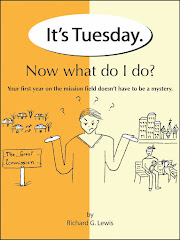
Okay, I’m putting on my anthropologist hat. A student in Kenya sent in his project report on one of the tribes in the country. Describing them as followers of African Traditional Religions he sated, “The people do not have a concept of a personal God but a communal God.” My mind has been on that theme since then; the difference between having a concept of a personal God, as do Christians, Jews and, to a certain extent, Muslims, and that of those who have a concept of a communal God, such as animists, Hindu’s, cultural Christians and cultural Muslims.
Simply stated, a communal concept of deity is that which a collective of individuals believe in a supernatural force, which provides security (from evil, sickness) and blessing (good crops, jobs, children). These communal deities range from trees in a forest to pictures in homes. In anthropology, there is an evolution of religion based on economy and education, from those people who are hunter/gathers to those who are literate and technological.
My research interest in the communal God took me to this article in the American Anthropologist (Sanderson, Stephen K. and Wesley W. Roberts - The Evolutionary Forms of the Religious Life: A Cross-Cultural, Quantitative Analysis. Vol. 110, No. 4, December 2008: 454-46).
Anthony Wallace delineated four types of cult institutions: (1) individualistic, in which individual persons perform their own private rituals; (2) shamanic, in which a part-time religious practitioner (a shaman) performs special rites for others in return for a fee; (3) communal, in which bodies of laypersons collectively perform calendrical and other religious rites; and (4) ecclesiastical, in which there are full-time priests who perform highly specialized rituals before audiences of laypersons. These cult institutions represent a typology of religious evolution.
In relation to these typologies, people’s view of God’s intervention follows:
(1) Absent or unreported, (2) present but not active in human affairs, (3) present and active in human affairs but not concerned with human morality, and (4) present, active in human affairs, and concerned with human morality.
The variable was coded as (1) Shamanic, (2) Communal, (3) Polytheistic, and (4) Monotheistic. We were guided by the following assumptions. A religion is Shamanic when a shaman is the center of most religious practice, a strong belief in animism is present, there are no calendrical rites, and laypersons rely on a shaman as the sole intermediary between themselves and the supernatural. A religion is Communal when laypersons are the center of religious practice and calendrical or other collective rites of some sort are present; although a shaman may be present, there are groups (e.g., kinship groups, age grades, or the whole society) that specialize in acting as a mediator between the people and the supernatural. A religion is Polytheistic when a hierarchically organized priestly class is present to direct laypersons in ritual practices, and the center of worship is a pantheon of distinct gods. Finally, a religion is Monotheistic when a hierarchical priestly class is present to direct laypersons in ritual practices, but there is a belief in a single, all-powerful god, rather than a pantheon of specialized and lesser gods.
 Though a communal God may be a foreign concept to most Christians, I will make the case in the next post that many people unwittingly serve a Communal God. In addition, I will explore what are the implications of this concept as it relates to witness and presentation of the Gospel. Until then, read Genesis 31:30 –35, about Rachel and her communal gods.
Though a communal God may be a foreign concept to most Christians, I will make the case in the next post that many people unwittingly serve a Communal God. In addition, I will explore what are the implications of this concept as it relates to witness and presentation of the Gospel. Until then, read Genesis 31:30 –35, about Rachel and her communal gods.

